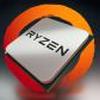On its community blog AMD posted a new entry talking about the new AGESA v1.0.0.6 firmware updates we mentioned earlier this month. The new update focuses on overclocked memory and there is some great news for IOMMU/ACS users,
AGESA is an acronym that stands for “AMD Generic Encapsulated System Architecture.” As a brief primer, the AGESA is responsible for initializing AMD x86-64 processors during boot time, acting as something of a “nucleus” for the BIOS for your motherboard. Motherboard vendors take the core capabilities of our AGESA updates and build on them with their own “secret sauce” to create the BIOS files you download and flash. Today, the BIOS files for AMD AM4 motherboards are largely based on AGESA version 1.0.0.4.
Beginning this month, as AMD began beta testing a new AGESA (v1.0.0.6) that is largely focused on aiding the stability of overclocked DRAM (>DDR4-2667). We are now at the point where that testing can begin transitioning into release candidate and/or production BIOSes for you to download. Depending on the QA/testing practices of your motherboard vendor, full BIOSes based on this code could be available for your motherboard starting in mid to late June. Some customers may already be in luck, however, as there are motherboards—like my Gigabyte GA-AX370-Gaming5 and ASUS Crosshair VI—that already have public betas.
Virtualization
If you’re the kind of user that just needs (or loves!) virtualization every day, then AGESA 1.0.0.6-based firmware will be a blessing for you thanks to fresh support for PCI Express® Access Control Services (ACS). ACS primarily enables support for manual assignment of PCIe® graphics cards within logical containers called “IOMMU groups.” The hardware resources of an IOMMU group can then be dedicated to a virtual machine.
This capability is especially useful for users that want 3D-accelerated graphics inside a virtual machine. With ACS support, it is possible to split a 2-GPU system such that a host Linux® OS and a Windows VM both have a dedicated graphics cards. The virtual machine can access all the capabilities of the dedicated GPU, and run games inside the virtual machine at near-native performance.
This is certainly a complicated setup for most users, but I have no doubt that there will be a whole lot of you enthusiastically nodding at this news. We’re grateful for your feedback and your patience, and we hope the new support for ACS serves you well.
Memory
AGESA 1.0.0.6 officially adds 26 new parameters that can improve the compatibility and reliability of DRAM, especially for memory that does not follow the industry-standard JEDEC specifications (e.g. faster than 2667, manual overclocking, or XMP2 profiles).
The following table spells out all the new parameters, and provides a few words on what they do. Keeping in mind that this is overclocking territory, manual or automated control of these parameters should nevertheless make it a little more straightforward to use DDR4-3200 modules—or faster if you have the talent.

